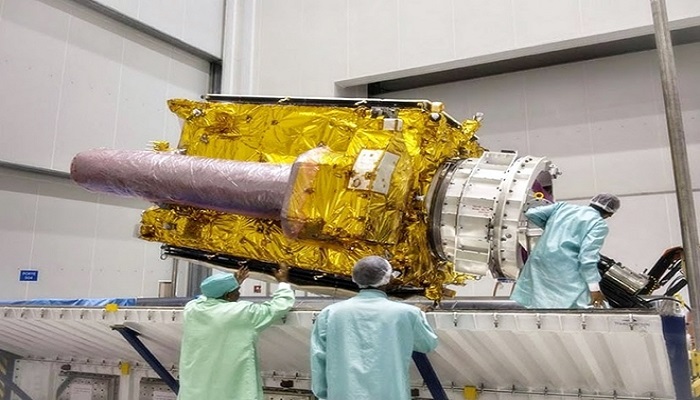
China increases its naval presence in the Indian Ocean Region amid the ongoing Sikkim stand-off, the Indian Navy is keeping an eye on the ‘dragon’ with the help of its ‘eye in the sky’, GSAT-7, the Navy’s own dedicated military satellite that was launched on September 29, 2013.
The 2,625-kg satellite, named ‘Rukmini’, has helped the Navy monitor the Indian Ocean Region (IOR) as it has a nearly 2,000 nautical mile ‘footprint’. The multi-band communication-cum surveillance satellite, which is operating from the geo-stationary orbit (at 36,000km altitude), provides real-time inputs to naval warships, submarines and maritime aircraft and networking capabilities to its naval assets on the high seas.
With the help of the shore-based operational centres, ‘Rukmini’ (also called INSAT-4F) has not only helped the Navy keep an eye on both Arabian Sea and Bay of Bengal but also helped the force increase its communication and surveillance capabilities from Persian Gulf to Malacca Strait, which together is equivalent to almost 70% of the IOR.
Rukmini, which provides wide range of service spectrum from low bit rate voice to high bit rate data communication, has given the Navy an integrated platform and helped it overcome the limitation of ‘line of sight’ (the straight path of signal when unobstructed by the horizon). With the help of this ‘eye in the sky’, the Army, too, gets vital inputs about over-the-land movements.
Due to the absence of the advanced GSLV rocket with carrying capacity of 4-tonne class satellite in 2013, Indian Space Research Organisation (Isro) had to use the commercial services of Arianespace in French Guiana, Kourou, to launch Rs 185-crore Gsat-7. “The satellite, which operates in UHF, S, C and Ku bands, has an advanced Helix antenna,” an Isro source said. The satellite, which has a payload power of 2000W, has a mission life of nine years.
Before Gsat-7 was launched, the navy, for warship communication, had to depend on Inmarsat, a major provider of global mobile satellite communications services. The desi satellite has reduced the Navy’s dependence on foreign services for warship communication.
A second satellite of this kind, Gsat-7A, meant exclusively for the IAF, is currently being developed. “This satellite is due to be launched by year-end,” the source said. Gsat-7A will enable the air force interlink different ground radar stations, ground airbase and airborne early warning and control (AWACS) aircraft such as Beriev A-50 Phalcon and DRDO AEW&CS. The satellite will also enhance network-centric warfare capabilities of the IAF and, therefore, enhance its global operations.

Post Your Comments